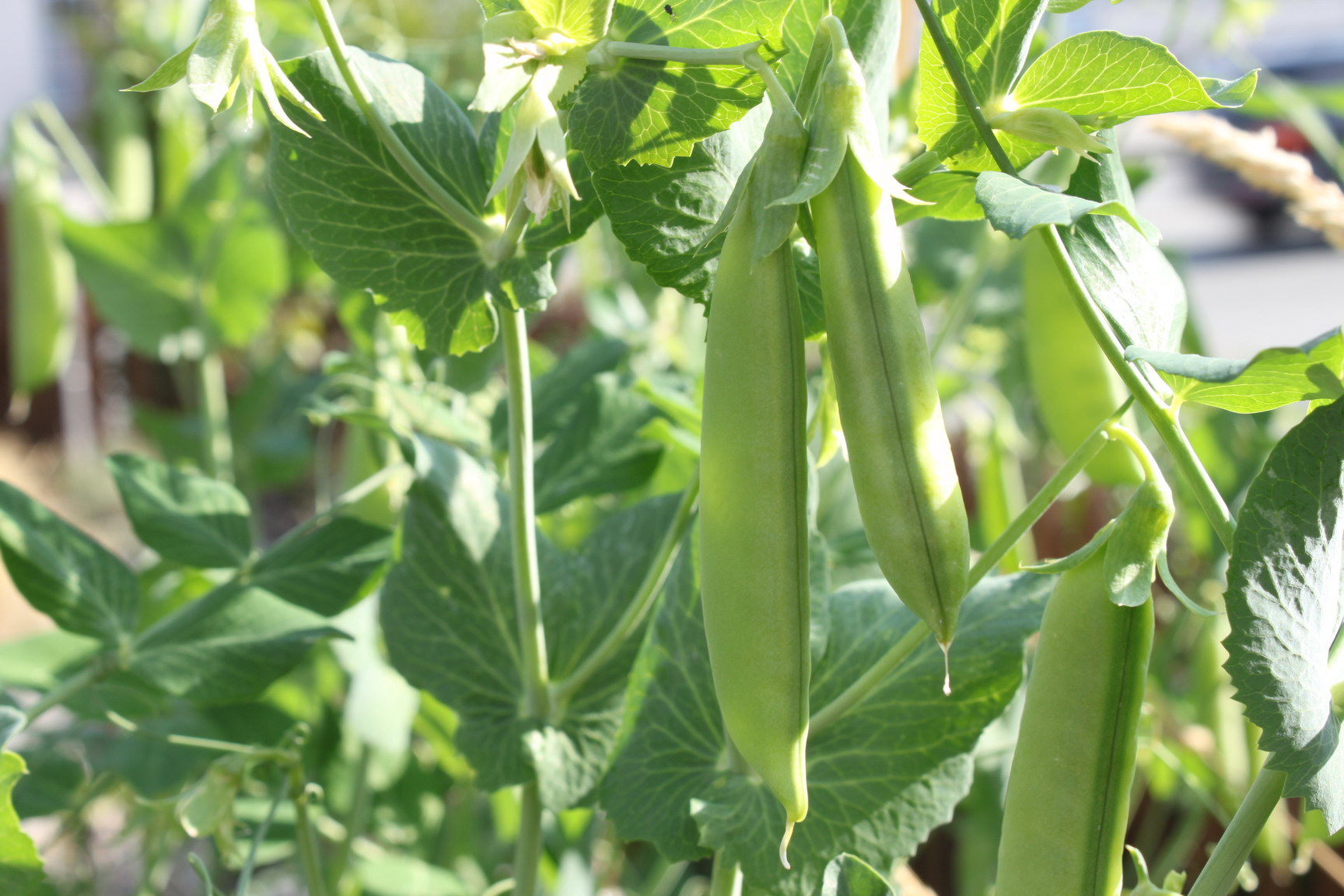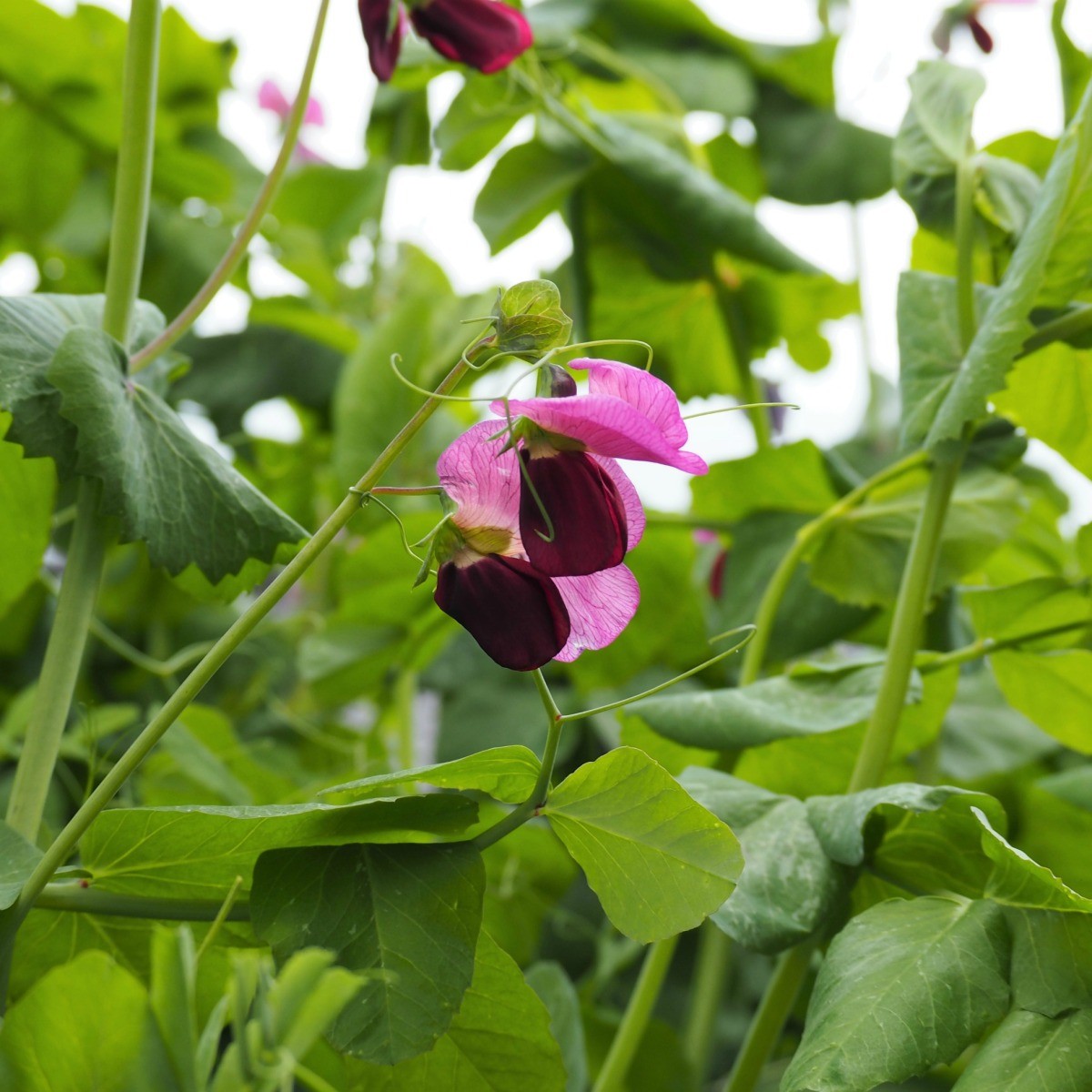

The sugar snap pea seeds should be placed in a seed groove approximately 3 – 5 cm deep.Sowing takes place between the beginning of March and the beginning of April directly into the bed.It also makes harvesting easier because you can spot most of the pods at a glance and don’t have to search for them.

The sugar snap pea trellis allows light to reach all parts of the plant more evenly, so that the fruits can grow and ripen better. This increases yields and at the same time improves the quality of the peas. Tip: For sugar snap peas – as well as for other climbing crops – it is helpful to use a trellis. A trellis allows the snap pea to grow easily and get plenty of light from all sides Sugar snap peas begin to germinate already after one to two weeks. Finally, the soil should be well watered to promote germination. The seeds can then be placed in the groove at a distance of about 10 cm before the groove is filled with soil and lightly pressed down. In this way, the sugar snap peas can reach a height of up to 1.5 metres.

In the intermediate area, you can also place a trellis, so that the plant can grow in height. A row spacing of approximately 35 cm should be maintained between two grooves so that the sugar snap pea plants have enough space for healthy growth. This ensures even exposure of the plants and thus uniform growth of the pods. Ideally, the grooves are aligned so that they run in a north-south direction. The seeds are sown directly into the bed, using a garden rake to make grooves about 3 to 5 cm deep in the loosened soil. In milder regions, sowing is usually possible from the beginning of March, the sugar snap peas easily tolerate short frosts. Sowing too late may result in a lower yield due to reduced flowering. The best time for sowing sugar snap peas is between March and early April, when damage due to prolonged periods of frost can no longer occur. sativus), cabbage cultivars (Brassicaceae), fennel ( Foenicum vulgare), lettuce ( Lactuca sativa), or radish ( Raphanus sativus var. Mixed cropping is possible without problems with carrots ( Daucus carota subsp. This prevents the transmission of foot and wilt diseases such as Fusarium. Since the sugar snap pea is poorly self-tolerant, a growing break of about four to six years should be taken between planting and replanting in the same plot. It absorbs fixed nitrogen through a symbiosis with nodule bacteria, which it incorporates into the soil when it is worked in at a later stage. The sugar snap pea is a low-yielding vegetable. In this way, a good supply of nutrients to the plants is ensured and the soil is sustainably protected to ensure the cultivation of vegetables in the future. If you have been growing vegetables in the same plot for a long time, you can occasionally resort to the help of a soil activator, which promotes soil life and can increase the humus content. Compacting the subsoil is not beneficial for pea cultivation, as this can lead to root rot more easily. The ideal soil is rich in humus, which can hold water well but does not tend to become waterlogged. Unsuitable, on the other hand, are very sandy and very heavy clay-rich or compacted soils. The sugar snap pea has hardly any special site requirements: deep soil in a sunny, airy location already provides the best conditions. In your own garden cultivation is also easily feasible with a little background knowledge.

In the meantime, however, the vegetable is also grown commercially in some areas with deep and nutrient-rich soils. The fertilised flower finally produces the pods, which are about 10 cm long, each containing between four and ten round seeds The white sugar snap pea flowers are small and rather inconspicuous Įspecially in delicatessens, the pods of sugar snap pea often come from overseas and arrive here by air freight. The white sepals are usually fused in a bell shape and are adorned with a corolla. The flowerhead of the sugar snap pea consists of one to three flowers, as is the case with garden peas. The ovate leaves are mostly entire and only rarely serrated. In addition, several thin side shoots can be formed next to the main shoot. It forms climbing or creeping bluish-green main shoots that can grow up to 1.5 metres long and are covered with deciduous leaves. The sugar snap pea grows as an annual herbaceous plant that reproduces through the fruits that are formed inside pods. It belongs to the garden pea genus ( Pisum sativum) and is thus part of the flowering plant family Faboideae, a subfamily of legumes (Fabaceae or Leguminosae). Sugar snap peas are known by many names, depending on the region, such as snow peas, snap peas, or mangetout. Sugar snap peas: origin and characteristics Sugar snap peas: origin and characteristics.


 0 kommentar(er)
0 kommentar(er)
